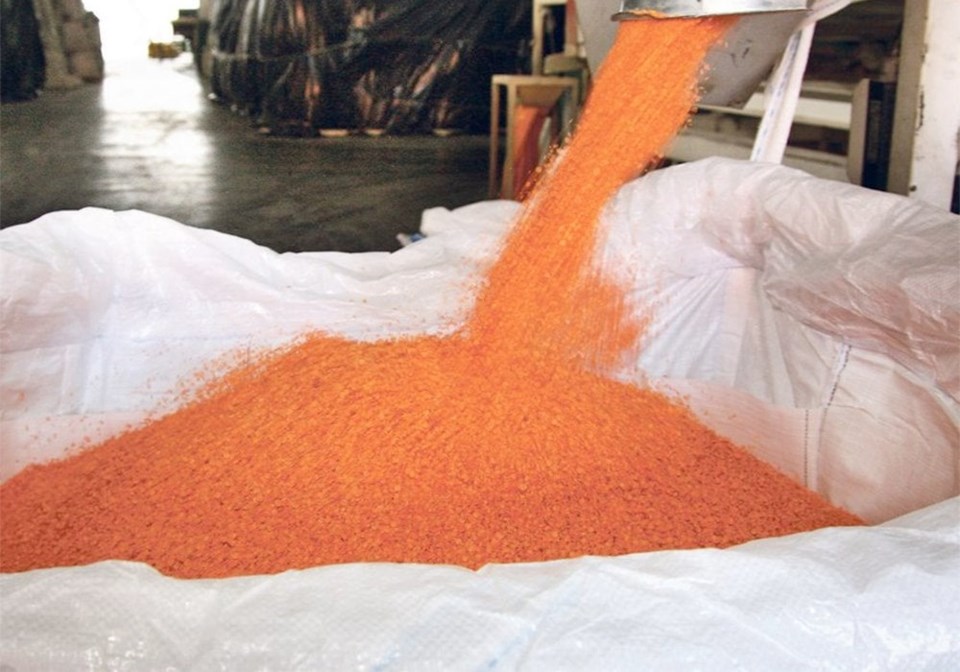SASKATOON — Old crop red lentil prices have bottomed out and should be heading higher as new crop seeding approaches, says a trader.
“We’re at the lower end of the old crop prices,” Will Watchorn, a trader with Viterra, said during the red lentil panel at the Global Pulse Confederation’s Pulses 2024 conference.
Canada is going to have tight stocks of the crop and so will Australia, which recently shipped out a record 250,000 tonnes of red lentils in December.
Red lentils are selling for about US$700 per tonne cost and freight (CNF) in India, which is the price-setter for the crop.
He thinks the price will rise toward the Indian government’s minimum support price of $780 per tonne as seeding of Canada’s new crop begins.
The other panelists thought old crop prices will remain in the range of $680 to $750 per tonne.
None of the panelists were brave enough to offer up a new crop price forecast with the exception of Gaurav Jain, analyst with AgPulse Analytica.
He thinks growers might be in store for slightly higher prices in 2024-25.
Jain said Australia sent shockwaves through the red lentil market this year. The country’s farmers produced an estimated 1.69 million tonnes of the crop in 2023-24, up from the initial forecast of 800,000 tonnes.
That is the second massive crop in a row for the Land Down Under, coming on the heels of a 1.8 million tonne harvest in 2022-23.
To put that in perspective, Canadian farmers harvested 1.16 million tonnes in 2023-24 and had total supplies of 1.33 million tonnes.
“It’s one of the smallest supplies on record for the country in the last decade or more,” said Jain, according to a recording of his Feb. 15 presentation.
The other big story in the red lentil market is the emergence of Russia and Kazakhstan.
The two countries shipped out 245,000 tonnes of the crop in 2022-23 and have already exceeded that amount during the first six months of the 2023-24 campaign, with 269,000 tonnes of exports so far.
Russian lentils face a very low export duty compared to other crops such as wheat and corn and there is the land and yield potential to encourage more production.
“Growers in Canada and Australia should be worrying about it,” said Jain.
He is forecasting 1.7 million tonnes of production in India for the current rabi crop. That would be a seven percent increase over last year and one of the largest crops on record.
India also has a substantial carryout from the 2023-24 crop of 829,000 tonnes, 600,000 tonnes of which is in government hands.
Jain is forecasting 1.15 million tonnes of Indian red lentil imports in 2024-25, a 28 percent decline from this year’s whopping program but still quite a robust number.
Ending stocks in 2024-25 will remain at an elevated 884,000 tonnes.
Turkey is the other major importer. He is forecasting 370,000 tonnes of imports in 2023-24, well below the previous year’s massive program of 869,000 tonnes.
The country re-exports a lot of those lentils to neighbouring countries. Iraq has emerged as a major buyer of the crop, importing about 200,000 tonnes per year from Turkey.
Turkey is expected to export 410,000 tonnes of the crop in 2023-24, down from 503,000 tonnes the previous year.
Carryout will fall to 189,000 tonnes from 303,000 tonnes, but that is still quite high.
Jain is forecasting that demand from Bangladesh, Pakistan, United Arab Emirates, Nepal, Sri Lanka and Egypt will be similar to this year.
Fethi Sonmez, a trader with Armada Foods in Turkey, thinks India should be using more red lentils as a substitute for pigeon peas because they are priced well below green lentils, which are fetching $1,500 per tonne.
Rav Kapoor, a trader with ETG Commodities in Canada, said red lentils can only replace pigeon peas in some Indian dishes. He thinks at most they could fill 300,000 to 400,000 tonnes of the country’s pigeon pea void.
He said Canada faces tough competition into the Indian market from Australia because shipping times are 10 days shorter from that country.
Kapoor expects Canadian growers to reduce red lentil plantings by five to 10 percent, but green lentil acres will increase 15 to 20 percent because green lentil prices are more than double reds.
“That’s a big disparity,” he said.
Watchorn said there are some production risks with the upcoming red lentil crop.
“I see quite a difference of opinions from people as to how the (Indian) crop currently looks,” he said.
Canada’s lentil growing triangle remains the driest part of the prairie region.
As well, Australia has a crop wreck about every five years, so he wonders if it is due for a disaster after successive bumper crops.
Contact [email protected]

